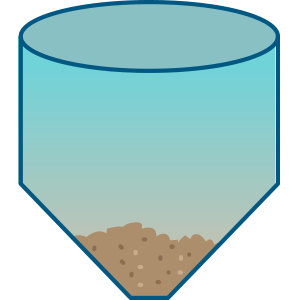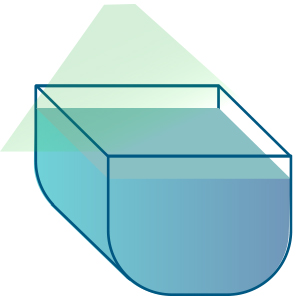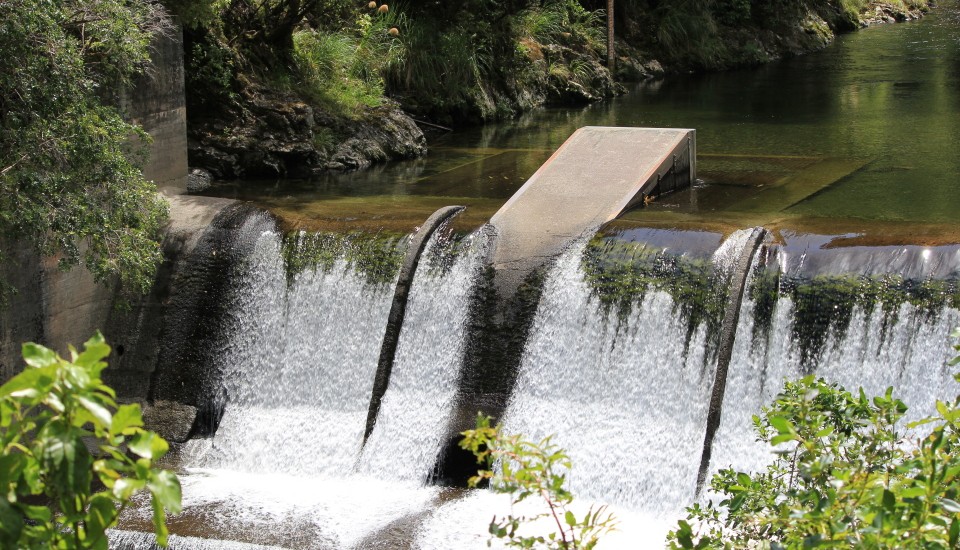Drinking water
Every day we supply safe drinking water to residents in the Wellington region, on behalf of our councils.
On average we supply around 170 million litres (ML) of water a day to Upper Hutt, Lower Hutt, Porirua and Wellington, and around 4 million litres of water per day to Greytown, Featherston, Martinborough and Pirinoa.
Water to your tap
We work hard to get fresh, clean, safe water to your tap. It goes through pipes, pump stations and reservoirs to get to your house.
We treat the water with fluoride to keep your teeth healthy and chlorine to kill any harmful bacteria that may have got into the water following the treatment process.
The region's water is considered soft everywhere but Martinborough. Hard or soft water is determined by how much calcium carbonate is in the water. Martinborough's water is considered moderately hard with a calcium carbonate content of just over 100mg/L. Very hard water is considered to be around 180mg/L. Minerals in the water make hard water less effective for soap to lather, can cause scum build up in kettles and appliances, may leave skin feeling dry and can make clothes stiff.
Water source
Most of the water used in Wellington, Porirua and the Hutt Valley comes from rivers and the rest comes from the Waiwhetu Aquifer.
Water comes from:
- Hutt River/Te Awakairangi at Kaitoke
- Wainuiomata and Orongorongo rivers
- Waiwhetu Aquifer
The aquifer is a natural underground reservoir underneath the Hutt Valley. It's fed from river water and rainfall seeping down into the ground and collecting in the natural reservoir.
In South Wairarapa water comes from:
- Bores close to the Waiohine River
- A bore in Memorial Park, Greytown
- Bores close to the Ruamahanga River
- A bore in Pirinoa
Bores are holes drilled into underground aquifers and water is pumped to the surface where it is treated to make it clean and safe to drink.
Water treatment process
Once the water has been collected at the intakes from the rivers, or is drawn from the aquifer, it enters a treatment plant. Each of the treatment plants are slightly different but the processes are generally similar.
Screening
Water is passed through screens or strainers to stop stones, sticks, leaves and silt from the water before it enters the treatment plant.
Rapid mix tanks
Carbon dioxide and lime are added to the water in the mix tanks to adjust the pH and alkalinity of the water to minimise potential corrosive effect of the water on pipes and fittings.
Coagulation
Coagulation is the process where positively charged chemicals are mixed into the water which attracts the negatively charged contaminants and dirt particles, like a magnet. This reactions helps us then separate any dirt from the water.
Flocculation
Water is either piped into a flocculation chamber or into a clarifier.
Flocculation is when water with the coagulation chemicals added is gently mixed with large paddles to help the clumps form, called 'flocs'. They often look like tiny tufts of brown cotton wool. These flocs are allowed to increase in size up to an optimum point so they become heavy enough to settle out of the water and can be easily removed by separation and filtration.
Clarification
Clarification is where the flocs are separated from the water. This can happen in a clarifier tank or through a process called dissolved air flotation.
Natural filters
After going through either of the clarification processes, the water is then passed down through filter beds containing layers such as gravel, sand and activated carbon.
 UV treatment
UV treatment
UV treatment manages the protozoa risk, and if delivered in a high enough doses can also treat bacteria and viruses, whereas chlorine on its own only manages bacteriological and viral risks. A combination of both treatment measures provides a multiple barrier protection system.
Disinfection
The filtered water is then disinfected by adding a small amount of chlorine. Chlorine guards against the risk of treated water becoming contaminated within the distribution system (the drinking water network) and is a further precaution against the slim possibility of contaminants getting through the treatment process. The amount of chlorine used is measured and dosed to target a minimum residual of 0.2 parts per million at the far end of our distribution system. To put that into context a swimming pool has 1.0 to 5.0 parts per million, which is about five to 25 times more chlorine than what's in drinking water.
pH Adjusting
The pH of the treated water is adjusted again using lime, to protect pipe network from corrosion, and fluoride is added for dental protection.
Water treatment plants
There are eight water treatment plants, four in Wellington region and four in South Wairarapa.
Wellington
- Te Mārua water treatment plant
- Wainuiomata water treatment plant
- Waterloo water treatment plant
- Gear Island water treatment plant
South Wairarapa
- Waiohine water treatment plant
- Memorial Park water treatment plant
- Martinborough water treatment plant
- Pirinoa water treatment plant
Water conservation
Every drop of water counts so we need to be efficient with our water use and play a role in protecting our environment and this precious resource.
There are lots of different ways to save water around the home, here are some easy things you can do to save water:
- Turn off the tap while you brush your teeth
- Shower for as long as a song (about 4 minutes)
- Fix any leaking taps or toilets
- Do full loads of laundry
- Don't rinse your dishes before putting them in the dishwasher - scrape them off instead
- Add mulch to your garden to keep the moisture in the soil
- Water the garden in the early morning or evening using a handheld hose or watering can
Water restrictions
Level 1
Use sprinklers every second day. You can use handheld watering devices any time, on any day, so long as you don’t leave them unattended.
Level 2
No unattended sprinklers or irrigation. Only water your garden by hand. You can use handheld watering devices any time, on any day, so long as you don’t leave them unattended.
Level 3
Stop residential outdoor water use. You can continue to water your vegetable garden using a watering can or bucket.
Level 4
Reduce indoor water use, limit showers to 2 minutes and only wash one load of laundry per person per week. This is a significant water shortage and this is an emergency scenario.

